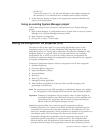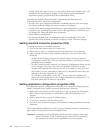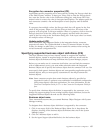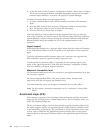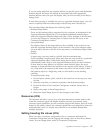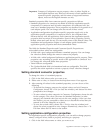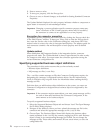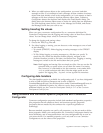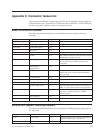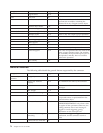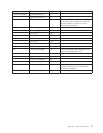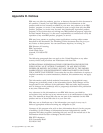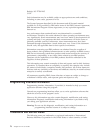
4. When you add business objects to the configuration, you must load their
message set files. If you attempt to load a message set that contains a business
object name that already exists in the configuration, or if you attempt to load a
message set file that contains a duplicate business object name, Connector
Configurator detects the duplicate and displays the Load Results dialog. The
dialog shows the business object name or names for which there are duplicates.
For each duplicate name shown, click in the Message Set ID field, and choose
the Message Set ID that you wish to use.
Setting trace/log file values
When you open a connector configuration file or a connector definition file,
Connector Configurator uses the logging and tracing values of that file as default
values. You can change those values in Connector Configurator.
To change the logging and tracing values:
1. Choose the Trace/Log Files tab.
2. For either logging or tracing, you can choose to write messages to one or both
of the following:
v To console (STDOUT): Writes logging or tracing messages to the STDOUT
display.
v To File: Writes logging or tracing messages to a file that you specify. To
specify the file, choose the directory button (ellipsis), navigate to the
preferred location, provide a file name, and choose Save. Logging or tracing
message are written to the file and location that you specify.
Note: Both logging and tracing files are simple text files. You can use the file
extension that you prefer when you set their file names. For tracing
files, however, it is advisable to use the extension .trace rather than
.trc, to avoid confusion with other files that might reside on the
system. For logging files, .log and .txt are typical file extensions.
Configuring data handlers
The data handlers section is available for configuration only if you have designated
a value of JMS for DeliveryTransport and a value of JMS for
ContainerManagedEvents. See the descriptions under ContainerManagedEvents in
Appendix A, Standard Properties, for values to use for these properties. For
additional details, see the Connector Development Guide for C++ or the Connector
Development Guide for Java
Using standard and connector-specific properties with Connector
Configurator
Connector configuration properties include both standard configuration properties
(the properties that all connectors have) and connector-specific properties
(properties that are needed by the connector for a specific application or
technology).
Because standard properties are used by all connectors, you do not need to define
those properties within your configuration file; Connector Configurator already has
those definitions, and it incorporates them into your configuration file as soon as
you create the file. For standard properties, your only task is to use Connector
Configurator to set the values of the properties.
Appendix B. Connector Configurator 71



